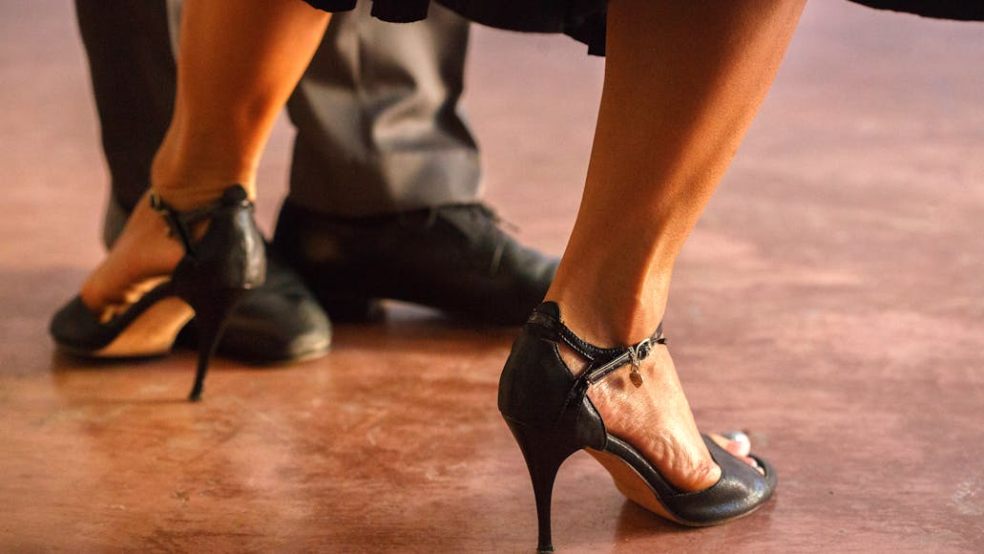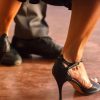
The Dancer's Guide to The Ideal Dance Shoes
If you have recently started dancing, you may be wondering how the dancers glide around the floor week after week, making their moves appear effortless. One of their top secrets is selecting the appropriate dance shoe.
You should note that not every pair of dance shoes is alike. Choosing the appropriate one for your foot is essential for keeping your feet, ankles, knees, and hips moving and grooving painlessly for years to come.
And no, you can’t achieve the same levels of foot protection as regular shoes.
What makes dance shoes unique?
The soles of dance shoes and regular shoes differ significantly. Ballroom dance shoes that you can get when you clickhere feature a thin suede sole that allows them to glide around the floor with just the proper amount of traction.
Dance shoes are highly flexible, allowing them to glide alongside the foot. A well-designed shoe can help you glide, slide, and move quickly, emphasizing footwork and leg lines.
Shoes not intended for dancing typically feature a rubber sole to aid in grip and durability—but the grip is the reverse of what dancers seek.
For optimum comfort, ensure your dance shoe is the correct size. The worst thing you can do is to invest in a shoe that doesn’t fit you properly. Hence, it bites you, or it keeps coming off. You don't want this, do you?
Can you wear your dance shoes outdoors?
You should only wear traditional dance shoes with suede bottoms in the dancing studio or stage.
This is because suede catches quickly on rough surfaces, so stepping directly from the sidewalk to the dance floor is not a good idea. Keeping the suede bottoms smooth is vital when stepping onto the dance floor; that smoothness gives you the on-stage grace.
If you love dance shoes and would love to wear them outdoors, you should note that more and more designers are turning to them for inspiration.
With women's main gripe about high heels being a lack of comfort, shoemakers have begun adapting dancing shoe designs for everyday heels and pumps that you can wear to work or on a night out.
Latin dance shoes for women
This is the most common dance shoe style for women who perform ballroom dance. This style, sometimes known as "modern" or "court" shoes, is used to rehearse and perform salsas, waltzes, foxtrots, the cha-cha, swing dancing, tango, and almost any other type of ballroom dance.
Style & Fit
Women's Latin-style dance shoes are available in both open and closed-toe styles. Either option is acceptable, depending on your preference. Still, closed-toe shoes are sometimes recommended for beginners because they make it easier to avoid stepping on or rubbing against your partner's shoes. The heel height of the shoes ranges from 1 to 3 inches, with a standard height of 2.5 inches.
The narrow heel makes the maneuvers easier, while a flared heel is preferable for Latin-style dances due to its increased stability.
When purchasing, look for a shoe that hugs your foot without being overly tight. Shoes that are too tight might create blisters. At the same time, those that are too loose can cause you to trip.
Some firms stick to a single style, while others offer a wide range of custom-made dancing shoes to fit your foot, whether narrow, wide, or a size not commonly found in shoe stores.
Most women choose pumps with an open side of the feet and a closed-toe box connected to the foot by an ankle strap. However, strappy sandals are also popular purchases.
Pumps are evolving into hybrid footwear as more shoe manufacturers use dancing styles to maximize comfort. Either way, you have limitless design choices. What distinguishes one shoe is its style selection and unrivaled comfort level.
Latin dance shoes for men
Men typically wear Latin shoes to competitions rather than rehearsals or lessons. For everyday practice, men usually wear conventional Oxford-style lace-up shoes with heel heights equivalent to ordinary men's dress shoes.
Style & Fit
Men's Latin-style shoes feature a Cuban heel 1.5 inches shorter than regular heels (2.5 inches). Most guys like all-black Latin shoes, although they are also available in white, brown, two-tone, and other colors. This type of shoe is most commonly constructed of leather, nubuck, or patent leather.
Similar to the fit of women's Latin-style shoes, the shoe should not be excessively tight or too loose; it should fit comfortably to minimize slipping or blistering.
Are there vegan dance shoes?
If you are vegan and don’t want anything made from animal products, you shouldn’t worry, as there are many options for you. These shoes ensure you don't compromise your principles on the dance floor.
Vegan choices may include rubber soles, but synthetic pseudo-suede is also available. Many of the same designs of pumps, sandals, boots, and practice shoes traditionally made of leather are now available in animal-friendly materials.
You only need to find what fits you and try it on.
Tricks to taking care of your dance shoes
You should polish your ballroom dance shoes regularly to keep them in good shape. Suede shoes lose their nap—the tiny fibers that give them their characteristic texture—after a few months, especially if you wear them frequently off the dance floor. Thankfully, a steel-bristled brush can rejuvenate your shoes and help restore the nap to the suede.
Make it a habit to Scotchgard your shoes before wearing them. Not only will this help protect them from moisture, but it will also make them much easier to clean if treated before wearing. To assist in preventing cracking, consider applying silicone-based oil regularly.
Most designers tend to give a cotton bag for your shoes. If your shoes come in the bag, use them. If you know you won't wear your dance shoes for an extended period, keep them clean and safe in the dust bag.
This will not only play a vital role in protecting your shoes from dust and keep them looking new for a long time but also protect them from moisture and insects that might damage them.

















